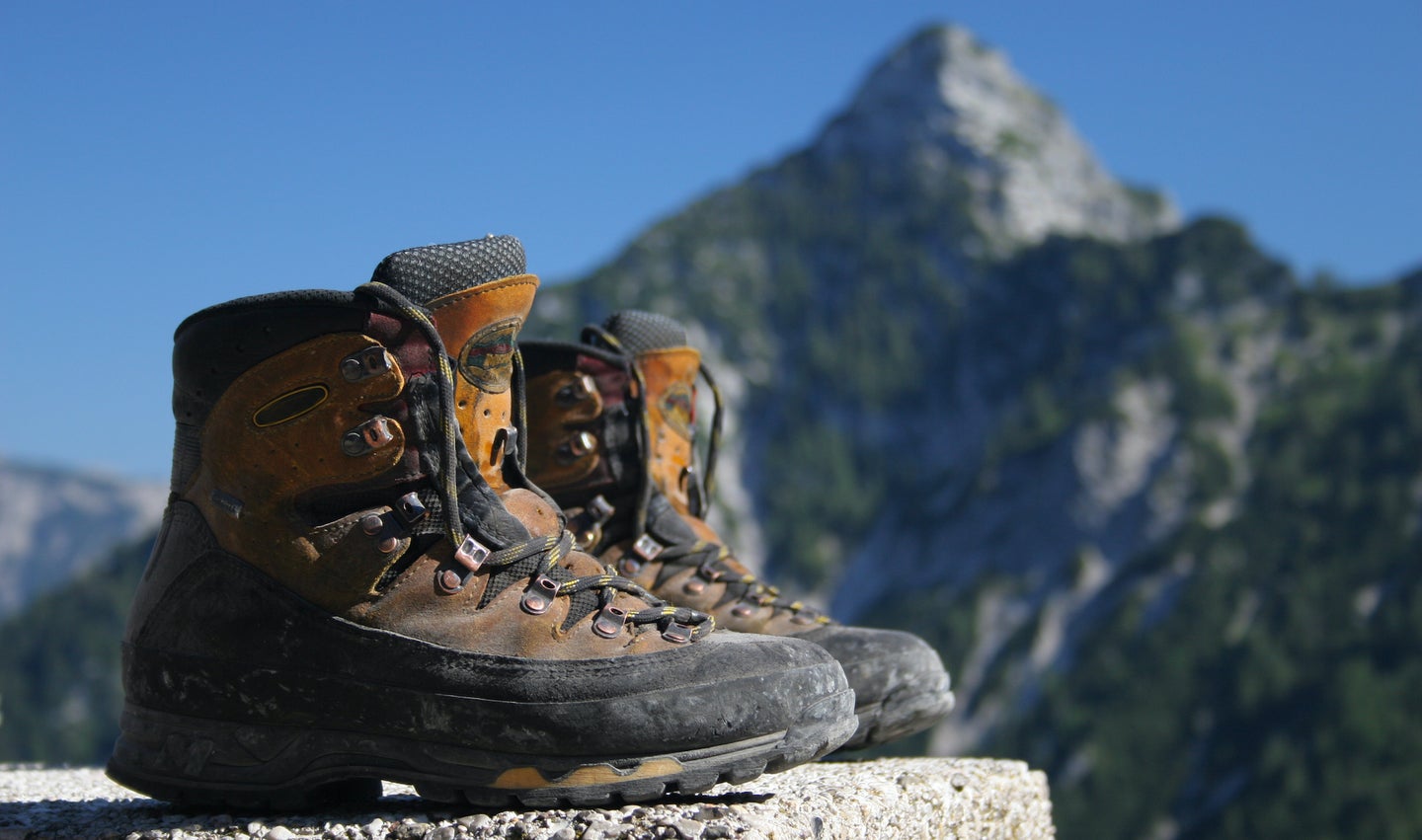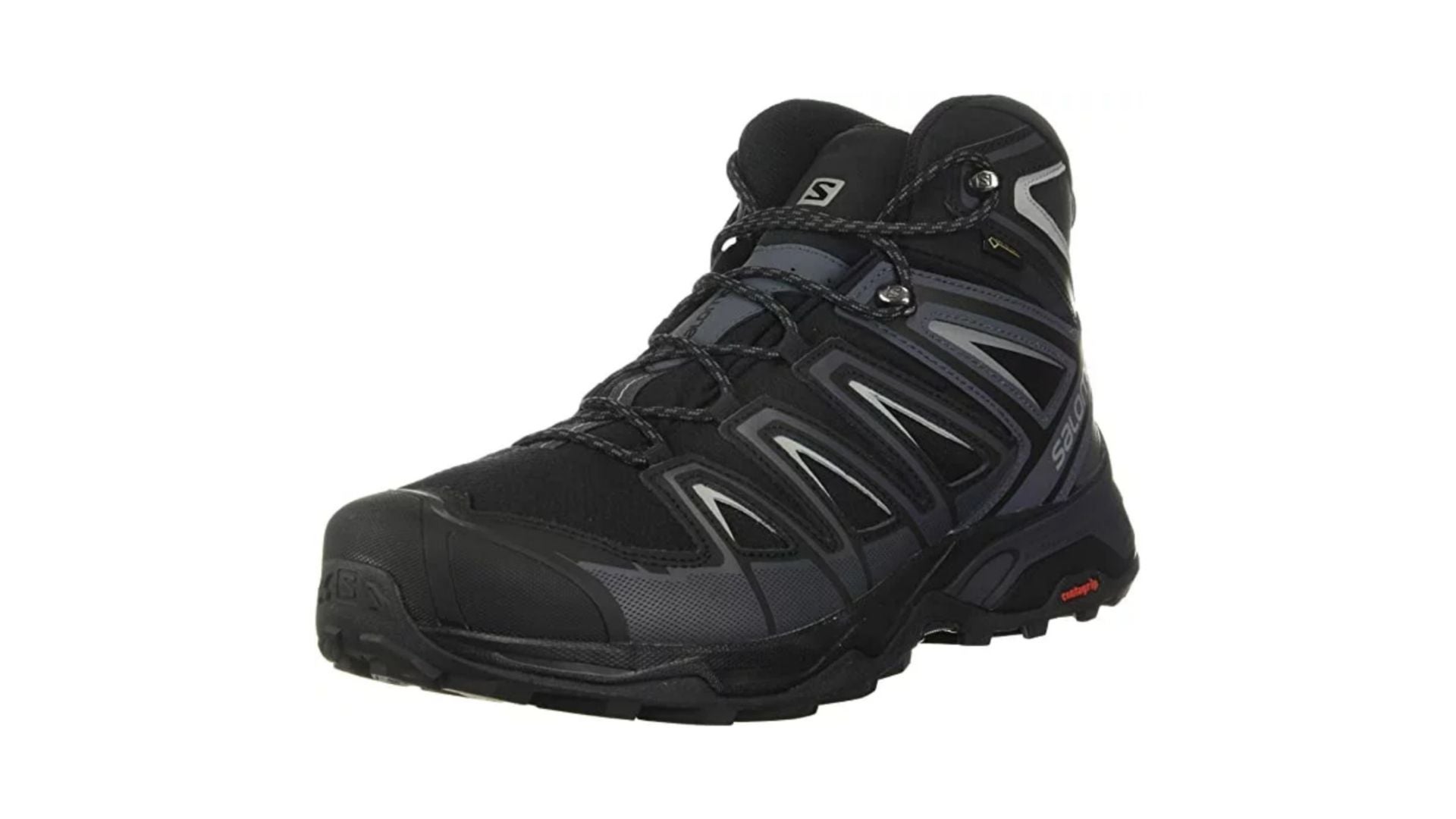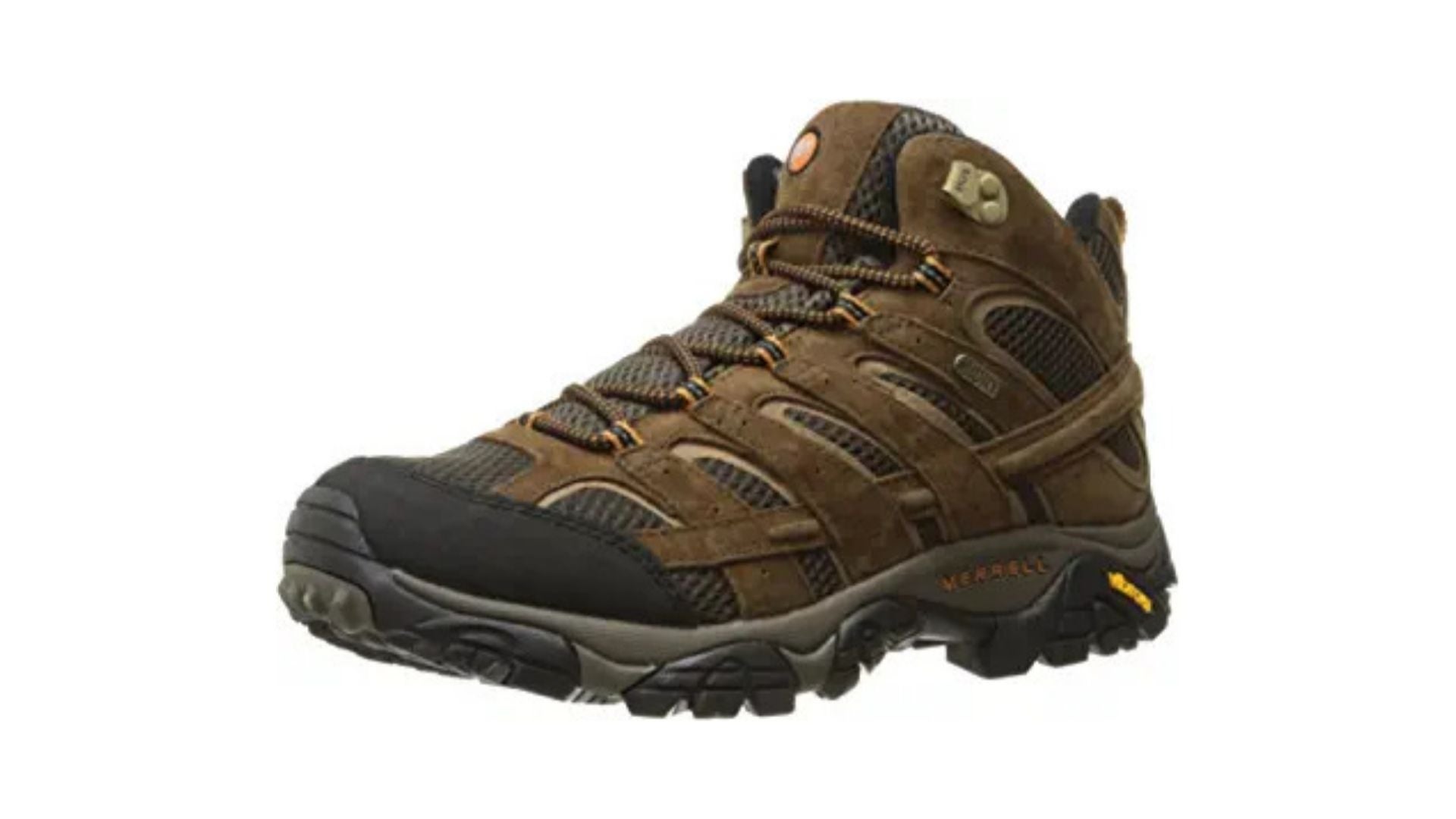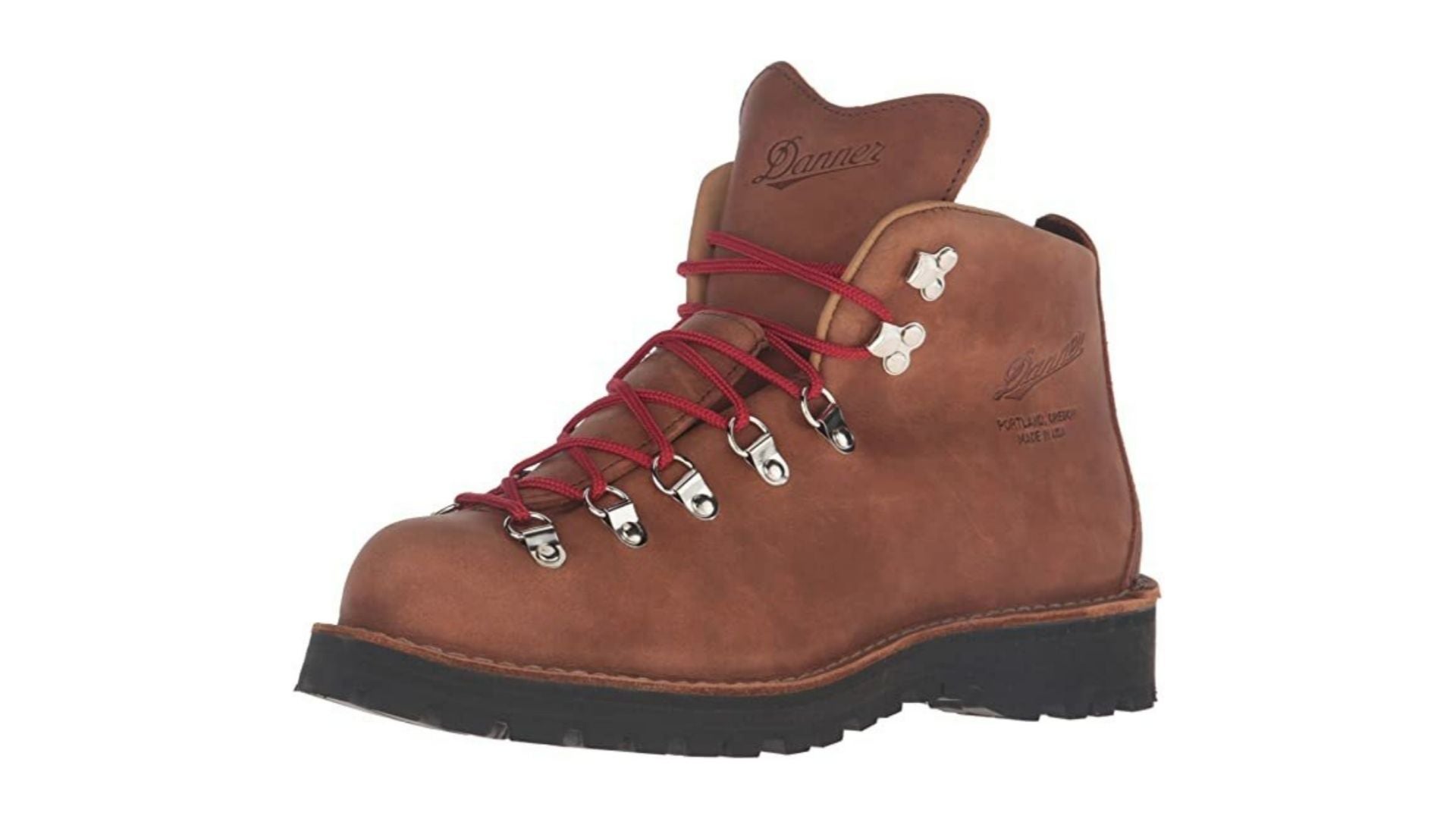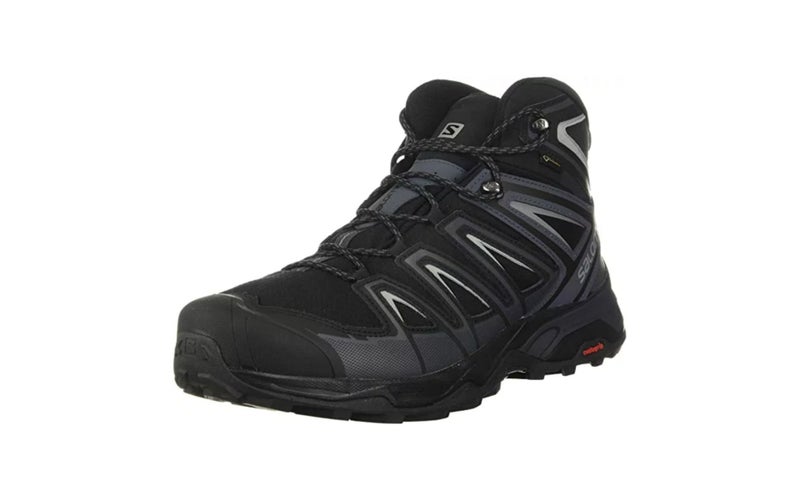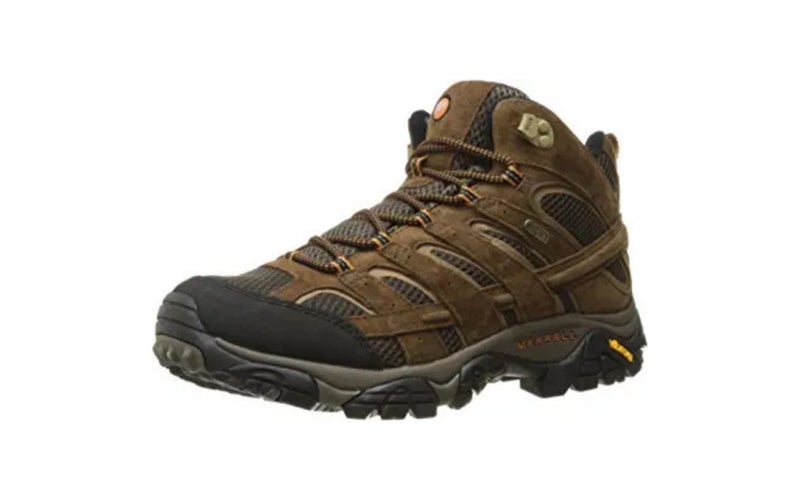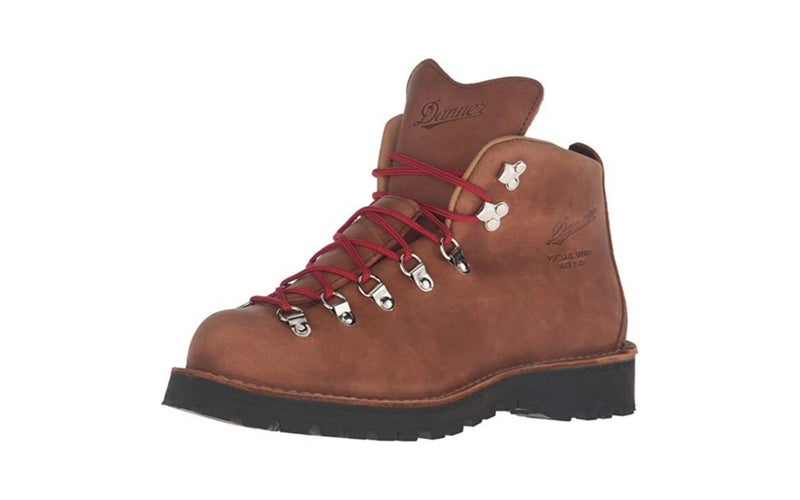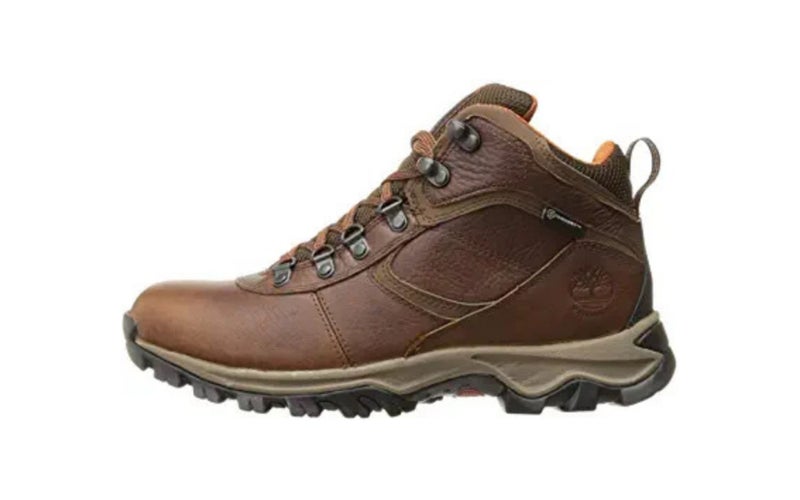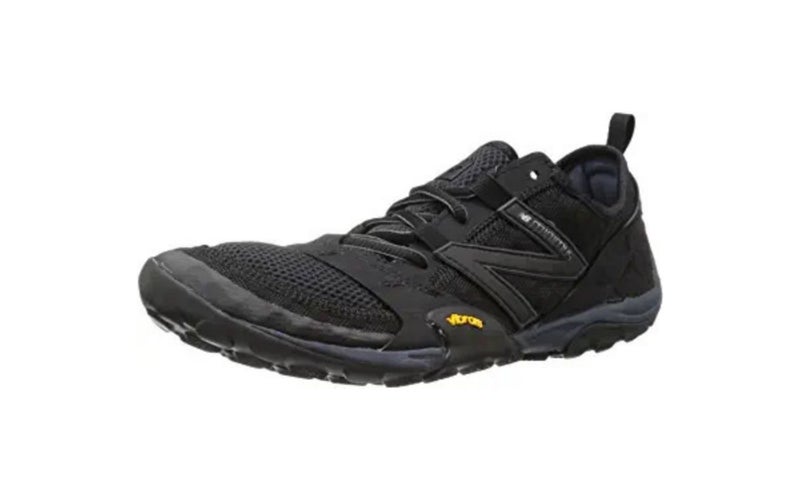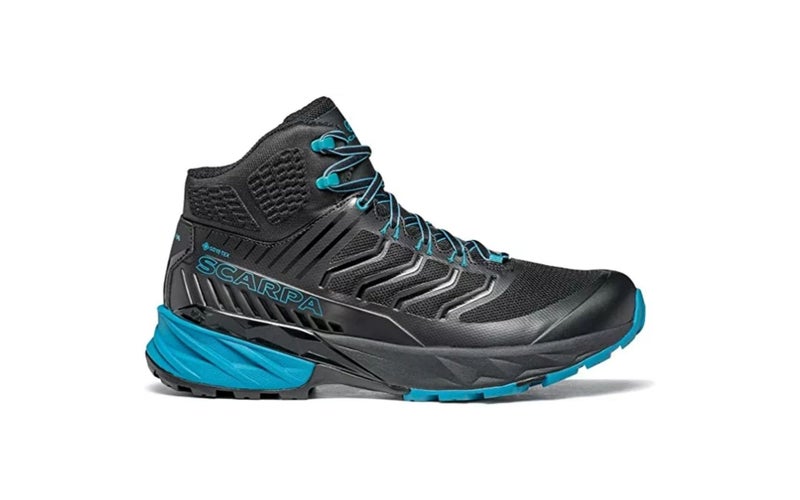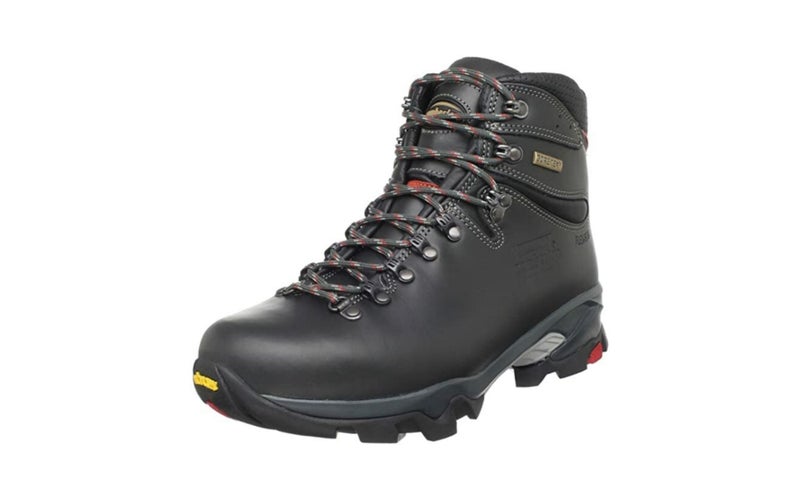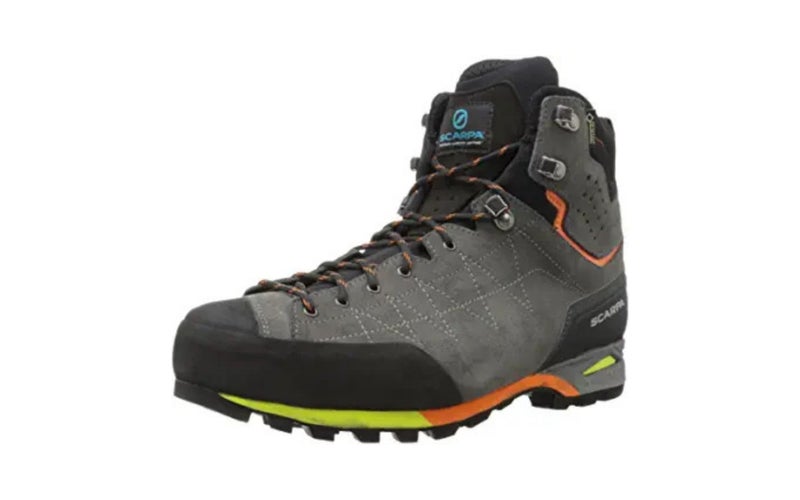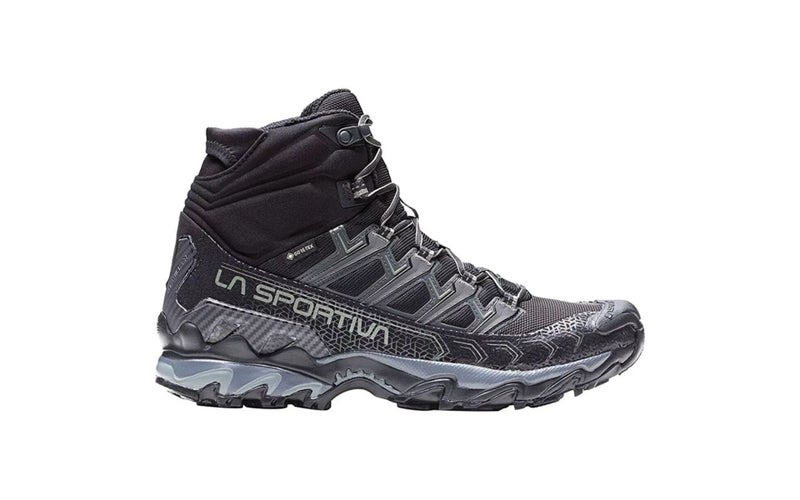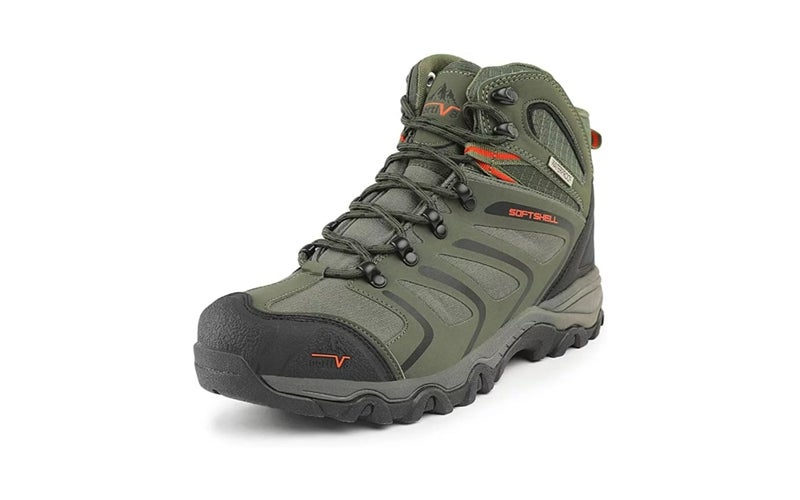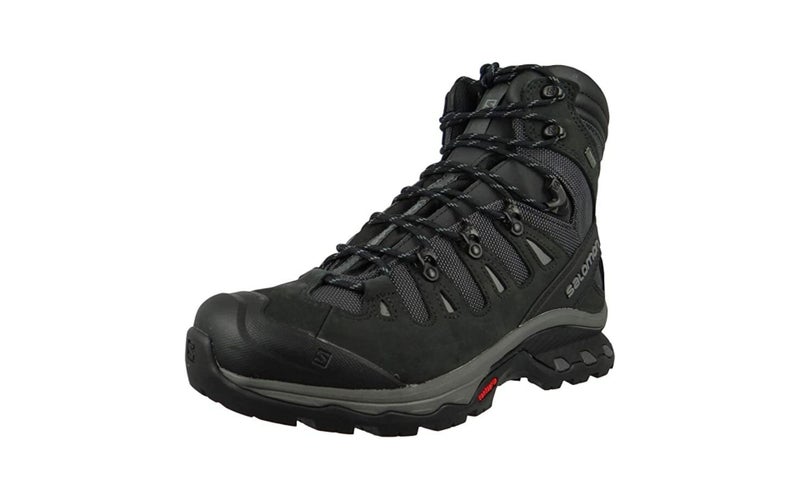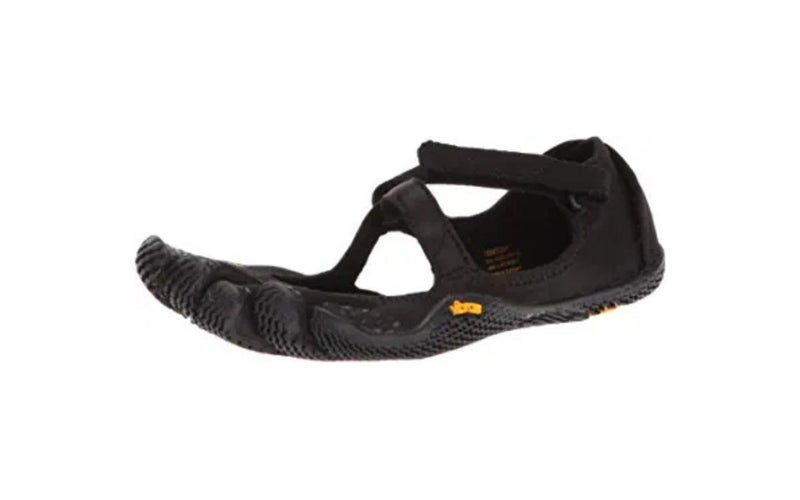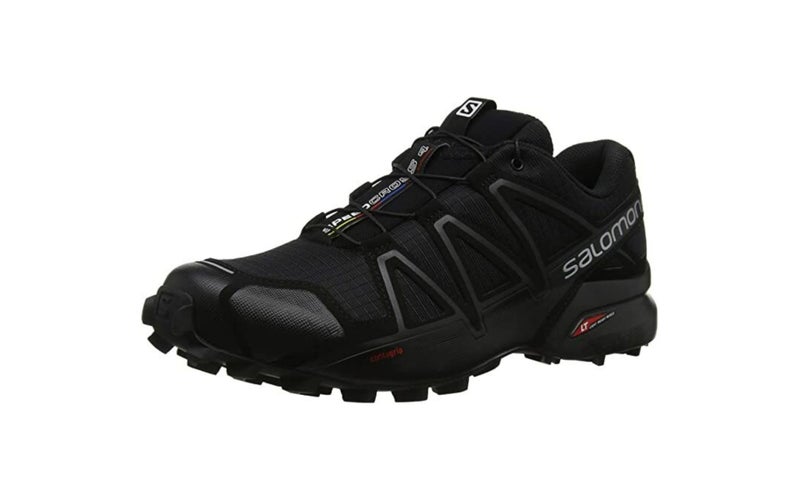We may earn revenue from the products available on this page and participate in affiliate programs.
Hiking boots and I have a bit of a love-hate relationship. In the Marine Corps, I logged more miles in jungle boots and moon boots than I can keep track of (and maybe one or two ill-advised humps in the woefully unsupportive Bates Lites). I’m sure you can relate, and I’m happy to report that there are much better ways to hoof it from A to B.
The Task & Purpose review team tests all kinds of gear, and we have some accomplished hikers among us. I’m talking about people that hike the highest peaks, hottest deserts, and longest trails. The boots we’ve tested span from bargain-basement to top-of-the-line. Rather than leaving you to navigate all those gear guides on your own, we compiled a list of our favorites to save time and get you on the trail as soon as possible. There are some shoes and boots that we liked, but didn’t think would be a good choice for your dedicated hiking boot. We also have favorite packs, camping gear, and more knives than you can shake a freshly whittled stick at. All that can be found in our gear section.
As for the best hiking boots for your next overland excursion, here are our favorites.
Salomon has made big waves with boots like the X Ultra 3. Our tester put this boot through its paces with a series of training hikes with a 45-pound pack, and it performed well in terms of comfort, traction, and waterproofing.
Our size 13 test boots weighed in at an impressive 2.68 pounds combined. Salomon’s Contagrip sole and EVA foam footbed provide loads of grip and padding–even enough for jogging with a pack. Waterproofing comes from tried-and-true Gore-Tex.
The downside of Gore-Tex is a dip in breathability, so expect a little more heat in this boot. Synthetic materials are light, but they do give up some torsional strength and durability to leather boots. Overall, the X Ultra 3 is a high-value buy that does just about everything well.
- Material: Synthetic upper, Contagrip outsole
- Waterproofing: Gore-Tex membrane
- Intended use: Hiking, backpacking
Supportive enough for serious backpacking
Lightweight to conserve energy
Incredibly comfortable footbed keeps hikers fresh day after day
Legendary waterproofing from the Gore-Tex upper
Less rugged and supportive than all-leather boots
Waterproofing results in reduced breathability
Incredibly versatile, but not the best at any one thing
Merrell is pretty proud of this boot; enough that they claim it’s the “mother of all boots.” During our testing, its high-end materials kept on trucking after being caked with salt that would have destroyed most boots. The advanced footbed was kind to knees that have taken a beating over the years. The MOAB 2 was also impressive during the waterproofing test.
The leather upper and Vibram TC5+ outsole are rugged enough to handle just about anything you throw at the MOAB 2. Half sizes are available up to size 12, and whole sizes go as high as size 15. Pricing varies by size, but a sale price of around $100 should be a safe ballpark for most shoppers.
Mid-height boots aren’t ideal for backpacking because they lack optimal ankle support. For most hiking, though, the MOAB 2 is tough to beat.
- Material: Leather and mesh upper, Vibram TC5+ outsole
- Waterproofing: M Select DRY waterproof lining
- Intended use: Hiking
Leather breaks in for an excellent fit
More breathable than many waterproof boots
Your knees and back will appreciate the ample cushioning
Vibram outsoles are famously durable and effective
Rounded heel sacrifices traction during steep descents
Low shaft height doesn’t offer much ankle support
Price seems high compared to some of the competition
Those of you who want a hiking boot that’s an easy transition from your combat boots will appreciate the Mountain Light lineup from Danner. This Cascade Clovis boot packs modern waterproofing and comfort into a timeless design that could have come from a 1950s logging camp.
The five-inch upper is made from a single piece of leather to add durability and reduce opportunities for water to seep past the inner Gore-tex lining. The outsole comes from Vibram and is designed to be comfortable while taking all the abuse you can throw at it. A fiberglass shank adds stability for conquering particularly gnarly terrain.
Despite the name, this boot isn’t as light as the all-synthetic alternatives. It’s best used as a hiking boot that splits duty as a work boot or everyday footwear for life outside city limits.
- Material: Leather upper, Vibram Kletterlift outsole
- Waterproofing: Gore-Tex membrane
- Intended use: Hiking, casual wear
One-piece leather upper is rugged and stylish
Wide outsole provides extra stability
Thick midsole adds cushioning and shock-absorption
Harkens back to the RAT boots we know and love
All-leather upper is anything but light
Mid-height shank limits ankle support
Chunky sole design is an acquired taste
Timberland has traditionalists covered with the Mt Maddsen hiking boot. This old-school design is just as relevant today and scored high marks in our testing for traction, waterproofing, and comfort.
Leather adds durability as long as you take care of it with occasional cleaning and conditioning. Hefty tread lugs provide plenty of grip. Plan on breaking in the Mt. Maddsen either by soaking it and going for a short walk or by easing into it with a series of short hikes. Consider the break-in period a chance to revel in the bargain price of around $99.
Flexible leather is incredibly comfortable, but this boot doesn’t offer as much support as more sophisticated designs. During our hands-on testing, it performed best with more leisurely hikes and light backpacking.
- Material: Leather upper, rubber sole
- Waterproofing: TimberDry membrane
- Intended use: Light hiking, casual wear
Leather upper is durable and timelessly stylish
Good traction thanks to grippy rubber and chunky tread
Excellent breathability for a full-leather upper
Soft footbeds are gentle on feet
Soft, comfortable upper offers limited support
Questionable durability under extended hard use
In-house outsoles aren’t as desirable as alternatives like Vibram
If you take weight savings to an extreme, this is the hiking shoe for you. The New Balance Minimus 10 V1 is a trail running shoe that puts your foot as close to the ground as possible, acting more like a super-tough sock than a boot.
This shoe’s mesh upper is lightweight and breathable, while the thin sole exhibits minimal drop (approximately four millimeters) to let your foot grip the ground naturally. While it isn’t something I’d recommend for backpacking, this is a great option for people who want to hit the trails for a casual walk or enjoy a nice mix of hiking and trail running.
Cushioning and waterproofing are nonexistent. If you have flat feet, severe pronation, supination, or ankles that are susceptible to rolling, this probably isn’t the shoe for you.
- Material: Synthetic upper, Vibram outsole
- Waterproofing: none
- Intended use: Trail running
About as close to hiking barefoot as you can get
Lightweight without sacrificing durability
Minimalist shoes can make your body more stable over time
Equally good at running and walking
Minimal support and no water protection
Not suitable for backpacking
Longevity is nowhere near that of hiking boots
The SCARPA Rush blurs the line between hiking boots and trail running shoes. Torture testing isn’t really what this boot is all about, so our testing focused on fast shoreline hikes in Michigan. It’s light and waterproof, but nowhere near as supportive as the other hiking boots on this list.
Gore-Tex doesn’t need an explanation — it works. Keeping this boot light provides plenty of flexibility, and the high top is more supportive than trail running shoes. The EVA midsole and TPU frame are similar to what you’d find on other SCARPA boots.
Light daypacks are no problem for the Rush, but I’d stay away from serious backpacking trips. The same goes for terrain; keep your hikes light and fast to get the most out of this speedy hiking boot.
- Material: Synthetic upper, rubber outsole
- Waterproofing: Gore-Tex membrane
- Intended use: Light hiking
Weight and comfort are comparable to a running shoe
Rockered sole shape is great for running and fast hiking
Gore-Tex upper is waterproof and breathable
Excellent impact absorption makes these all-day comfortable
Not as supportive as a true hiking boot
Waterproofing is compromised above the fifth eyelet
Runs about a size smaller than other Scarpas
You probably won’t see many Zamberlan boots on your local trails, but that’s not a reflection of the brand’s build quality. The Italian boot maker has been refining its hiking and backpacking boots for nearly a century, and they know what works.
The 996 Vioz GT uses a single piece of full-grain leather to build the rugged upper. A Gore-Tex lining remains breathable while adding its famous waterproofing. This boot is designed for extended backpacking trips in the Italian Alps, where rocky crags and year-round snow are very real considerations. If you want a rugged backpacking boot, this deserves a serious look.
The Zamberlan Air System is designed to facilitate breathability, but this boot won’t be as cool as a synthetic mesh boot. The thick leather is incredibly supportive, but you’ll need several hikes to break it in.
- Material: Leather upper, Vibram 3D outsole
- Waterproofing: Gore-Tex membrane
- Intended use: Backpacking
Easy to flex, but with tons of lateral stiffness
Intended for through hikes with camping gear
Treated leather and Gore-Tex provide outstanding water protection
Zamberlan has been making premium boots in Italy since 1929
Leather and aggressive tread patterns aren’t light
Too warm for hot weather
Break-in period can be lengthy
The SCARPA Zodiac Plus GTX is built for hikes that involve snow and rocky crags. Our testing involved treks along perilous ridgelines. The SCARPA’s grip was excellent on snow and slippery rocks that would have been too much for most hiking boots.
The multilayer sole and suede upper are durable and comfortable, even with a pack. This boot is stiffer than most and excels in rugged terrain with challenging footing. The MSRP of $270 might be tough to swallow, but you get what you pay for.
The Zodiac isn’t heavy, but it also isn’t light and the sole is stiffer than you might be used to. Most hikers will be priced out. If you can get past those obstacles, this boot will get you past all the other obstacles.
- Material: Suede upper, Vibram Mont outsole
- Waterproofing: Gore-Tex membrane
- Intended use: Challenging winter hiking
Warm, durable upper keeps feet dry and ankles stable
Aggressive outsole is designed for snow, ice, and loose rocks
Waterproof Gore-Tex membrane
Surprisingly light for a mountaineering boot
Not as comfortable as less-supportive hiking boots
Heavier than most hiking boots
Suede upper will require regular cleaning
If you’re the type of hiker who keeps track of every ounce, check out the La Sportiva Ultra Raptor II. Weight varies by size, but our size 13 test boot was the lightest we’ve seen. This boot is more flexible than most hiking boots, but definitely not flimsy.
The mid-height upper provides a decent amount of support. Comfort comes from the Ortholite Mountain Running footbed. An optional Gore-Tex lining is a welcome addition and does a great job of keeping water at bay.
Being one of the fastest hiking boots out there comes at a cost. Don’t expect the same kind of support as you’d get from a more robust boot. Sizing also runs a bit narrow.
- Material: Synthetic upper, Frixion outsole
- Waterproofing: Gore-Tex membrane
- Intended use: Hiking
Top-notch traction on the most challenging surfaces
If you manage to flood them, they’ll drain quickly
As light and comfortable as a running shoe
Stable enough for light backpacking
Relacing is harder than it should be
Standard-width boots run noticeably narrow
Not supportive enough for regular backpacking
Nortiv 8
If sticker shock has you questioning your interest in a dedicated hiking boot, don’t give up hope until you’ve tried this one from Nortiv 8. Our reviewer logged miles of hiking and even sprinting in this boot with no hot spots or blisters. It also held up well in the waterproofing test.
The synthetic materials used to build this boot keep costs and weight down. They’re also easy to clean. The tread is nothing fancy, but lugs on the bottom and side of the sole provide plenty of traction. This boot isn’t fancy, but it costs less than $70 so we won’t complain.
Cost-cutting has its consequences. You’ll want to reapply a water-repellent coating occasionally to stay dry. The lack of metal eyelets makes lacing a chore and raises questions about longevity. Still, this boot is functional and gets the job done for a fraction of the price of most hiking boots.
- Material: Synthetic upper, rubber outsole
- Waterproofing: waterproof membrane
- Intended use: Hiking
Priced far below the competition; great for beginners
Plenty of ankle support
Ample padding protects against blisters and hot spots
Easy to clean, so there’s no need to baby them
Retain too much heat for use in warmer climates
Heavier and bulkier than higher-end boots
Half-sizes are only available up to size 9.5
The Salomon Quest 4D 3 Gore-Tex earned our pick for best heavyweight boot because of the heavy-duty hiking it’s capable of, not because the boot itself is heavy. A trip to the Cascades with a pack full of gear proved that this cutting-edge boot isn’t just capable of serious ascents, it’s downright comfortable doing it.
Advanced materials keep this boot light and flexible without sacrificing support. Grip from the Contagrip TD sole just doesn’t quit. Waterproofing is excellent up to depths of 6.5 inches. Salomon lists an MSRP of $230.
Price will be a barrier for some people, but this boot is worth the cost. Another potential problem is sizing. This is such a hot-ticket item that common sizes sell out quickly. Save up enough money and land a pair while you can, and you’ll have one of the best boots we’ve ever tested.
- Material: Leather and textile upper, rubber outsole
- Waterproofing: Gore-tex membrane
- Intended use: Hiking, backpacking
Earned rave reviews during our most rigorous boot test yet
4D chassis is supportive enough for true backpacking
All-day comfortable right out of the box
Waterproofing is top-shelf
Serious hiking is required to justify the price
This much tech is overkill for most hikers
Your other boots will feel significantly less awesome by comparison
If even combat Crocs are too restrictive for you, you can either go barefoot or get a pair of Vibram V-Souls. Hiking sandals are a thing, folks, and you just might be a fan if you give them a try.
This sandal is little more than a way to keep the Vibram outsole strapped to your foot. It’s light, liberating, and features five-finger toes to let your foot move naturally. You’ll get to experience nature just like your ancient ancestors, minus the calloused feet and predators that make the Tiger King look like a harmless old cat lady.
Now, would I wear these for hiking or backpacking? Personally, no. The lack of support and overall protection is a deal-breaker for me. But once I get to the campsite, the V-Soul looks like a great way to cool down or go for a swim without torturing my feet on rocks and sticks.
- Material: Synthetic upper, Vibram outsole
- Waterproofing: none
- Intended use: Light hiking
As breathable as footwear can be
Maximum lightness has been achieved
Vibram outsole adds much-needed protection
You can’t have dirty socks if you aren’t wearing any
Did you pack enough sunscreen for your feet?
Protects against sharp rocks, and nothing else
Jokes will be made at your expense
If you thought you’d seen the last of Salomon on this list, I’ve got news for you because the Salomon Speedcross is a legend in the trail-running world. This beefy shoe uses the best materials available to provide the protection you need without weighing you down.
The synthetic upper is lightweight and breathable to keep your feet cool. It isn’t waterproof, but a Gore-Tex version of the Speedcross 4 is available. Beneath your feet, advanced cushioning provides comfort mile after mile. Salomon’s Contagrip outsole bites into loose surfaces as hard as a hiking boot, so you can hit your stride even on loose sand and mud.
The Speedcross is (no shocker here) designed to go fast. If you want a quintessential trail-running shoe, look no further. It’s capable enough to stand in for occasional hiking duty, although you’re better off in a boot if you plan on carrying a pack.
- Material: Synthetic upper, Contagrip outsole
- Waterproofing: none
- Intended use: Trail running
Aggressive tread pattern provides boot-like traction
Say goodbye to laces that come untied
High-tech upper is lightweight and tough
Enough cushioning for distance running
Lack of ankle support limits hiking, practically rules out backpacking
Tread isn’t suited to running on pavement
Soft outsole wears quickly on hard surfaces
Why you should trust us
We’ve assembled a crack team of gear testers who combine for decades of hiking experience–both under a standard-issue ruck and on their own. We know what it’s like to hump through the night with blood blisters and cut calluses off to make our boots fit again. Thanks to the wonders of the free market, we also know how good a quality pair of boots feels compared to worn-out combat boots.
Our gear experts conducted hands-on testing of every product you see here. These boots have forded cold mountain streams, slogged through mud, endured desert heat, and made mountain ascents that leave me gassed just from reading about them. Since we use the gear we test, our tolerance for shoddy products is basically nonexistent. If we include a pair of boots in this roundup, it’s because that boot has earned our respect the hard way.
Types of hiking boots
Hiking is a pretty broad term. Our own writers hike things like the Appalachian Trail and Mount Rainier. Some people hike the local park in less time than it takes their pumpkin spice latte to get cold. Those styles of nature walks require footwear with very different features. Price is another consideration. There’s no need to break the bank on boots for casual hikes, but more ambitious endeavors are worth springing for something high-end. We’re here to break down some of the main factors you need to evaluate.
Casual hiking boots
What’s on your feet right now? Unless you’re wearing combat boots, I’ll go out on a limb and guess that it’s something soft, lightweight, and flexible. That seems to be a winning recipe for comfort, so it’s how most shoes feel. Casual hiking boots are very similar. Since they don’t need to deal with heavy packs, uneven terrain, and slippery surfaces, this kind of hiking boot can prioritize short-term comfort. They’re great for weekend trips around the local trails, walking the dog, or going for even everyday use. Don’t push your luck, though, because they aren’t built to handle the kind of terrain and strain that comes with backpacking and serious climbing. Fortunately, they tend to be affordable and stylish enough to wear around town.
Traditional hiking boots
Traditional hiking boots up the ante with additional features that make them more wilderness-ready than casual hiking boots or trail running shoes. This meant using leather and chunky soles back in the day, but now we get to enjoy lightweight synthetics and more advanced tread patterns if we want. This style of boot costs more than something designed for fashion or casual hikes. Expect to pay at least $75, but potentially as much as $150 for a pair of dedicated hiking boots. For the extra money, you’ll get footwear that can support your ankles and feet on uneven terrain. More aggressive tread patterns will boost confidence in mud and loose dirt. Because they’re intended to have a rough and tumble service life, true hiking boots are also notably more durable and longer-lasting than budget options.
Backpacking boots
At the top of the hiking boot food chain are the apex predators that are backpacking boots. This style of boot is intended to do everything hiking boots do but under a heavy load. They need to provide enough structure to prevent you from rolling an ankle and be comfortable and supportive without getting packed out under load. They need to keep your feet dry because it might be days until you can get back to the trailhead and change into something else. Accomplishing all this can make a boot quite heavy, which is the last thing you want on a backpacking trip. Solving that problem involves advanced materials that cost a pretty penny, so it isn’t uncommon to see backpacking boots going for more than $200. They’re worth it for serious hiking, though. Get a few days into a week-long backpacking trip, and I bet you’ll agree.
Key features of hiking boots
Supportive uppers
Keeping your bones from rattling against each other is a top priority of hiking boots. One of the most common problems you’ll face on the trail is a rolled ankle. That’s right; not bears, not avalanches, not undiscovered cannibal civilizations. There’s a good chance you could ruin the whole experience by being bad at walking. Hiking boots wrap around the ankle to promote proper alignment and provide support in the event that a root sneak attacks you.
Down below, hiking boots also need to support your foot itself. Have you ever tried hiking in normal sneakers? It’s not pretty. Foam padding that’s soft and supple on hard floors is basically useless in the wild. What you thought was comfortable will actually leave your feet aching and blistered. Hiking boots are much firmer and keep your foot firmly in place so it can move effectively without sliding around.
All-terrain traction
Of course, keeping your feet comfortable and safe doesn’t do much good if you don’t have traction. A good tread pattern is key. Just like mud tires on a rugged off-roader, hiking boots can chew into loose surfaces and fling debris clear of the tread to get it ready for the next step.
The material hiking boot soles are made of matters, too. Most rubbers and plastics get stiff in cold temperatures and gooey in hot temperatures. Neither is good for traction, so hiking boots use purpose-built compounds that remain strong and grippy in all kinds of weather. Vibram is one of the most popular third-party makers of outsoles, but there are plenty of other quality options to choose from.
Water resistance
The whole point of hiking is getting further into the wild, so you’re going to get wet sooner or later. Maybe you’ll get caught in a downpour; maybe you’ll encounter a stream crossing. Either way, having wet feet is uncomfortable at best and potentially deadly in extreme circumstances. Your best line of defense is a hiking boot with waterproof protection. Quality hiking boots will let you walk right through standing water without so much as a drop reaching your feet. Others might get wet but can dry quickly. Which you choose will largely depend on where you hike. Sometimes getting wet is just part of the game, and your priority should be drying your gear overnight. In cold climates, you need to avoid moisture altogether. There are examples of each on this list.
Benefits of hiking boots
Comfort and injury prevention
Hiking boots wouldn’t be anyone’s first choice for lounging around the house or sitting at a desk, but make no mistake–comfort is key. Hiking boots need to be supportive and cushioned. If they’re not, you can expect rolled ankles and aching feet. They need to be breathable so you don’t end up with hot spots and sweaty socks. Maybe more than all of that, they need to fit properly to avoid blisters. Comfort may take a different meaning for hiking boots than for fuzzy house shoes, but it’s even more important. One of the best things you can do is adequately break in your boots a little at a time before embarking on a long hike so they can be at their best. While you’re at it, don’t forget about using the right hiking socks.
Longevity
I’ve done plenty of hiking in shoes that are less than ideal; that’s partly because I’m cheap and partly because I prefer lightweight gear. The problem is that, in addition to giving my body less support than I would have gotten from a hiking boot, my hiking shoes didn’t last very long. They just couldn’t keep up with the abuse and broke down too soon. The treads didn’t offer much grip, to begin with, and they wore smooth surprisingly quickly. Hiking boots are built to a different standard and typically last much longer than a hiking shoe or trail running shoe. That means your feet are better taken care of, and it saves you money in the long run.
Keeping hiking fun
When you take care of your body and save money, you take a lot of stress out of hiking. It starts to be fun again. When you aren’t distracted by blisters and sore knees, you can focus on the scenery and the people you’re with. Isn’t that what hiking is about? Sure, you can slog through a hump on hardball. You can get the job done in a pair of sneakers. But you’ll also spend the next few days eating ibuprofen like cereal and going through ice faster than a climate change documentary. I can’t do much to improve your battalion hikes, but I can make your recreational hiking more enjoyable. Do yourself a favor and use a hiking boot from this list to make hiking something to smile about.
Pricing considerations for hiking boots
Less than $75
Hiking boots are a lot like toilet paper–neither is something you should really cheap out on. Hiking boots in the sub-$75 range are either on sale or made some significant compromises in the name of cost savings. There are a few solid, money-saving options in this category, but it’s best to stick to the established brands to avoid trashing your feet with something that was only intended to perform in a product photo. We certainly respect the need to save money, so we made sure to represent this price range on our list with a boot that can get the job done without breaking the bank. It’s one of the good ones.
Between $75 and $150
This is the sweet spot, folks. Most hiking boots fall in the $75 to $150 price range. This is where you’ll find the big-name brands, modern materials, and features that are backed by legitimate research and development. Boots in this category are lightweight enough for work, short hikes, and even daily use. They’re also robust enough to rack up miles of trail at a time. They’re also great options for other outdoor activities like hunting and fishing. Extreme adventures like massive through-hikes and severe climbs might be more than you’d want to try in these boots, but they’re solid choices for everything else.
More than $150
Buying your way into the world of premium hiking boots will get you access to cutting-edge technology, lightweight materials that are still incredibly durable, and top levels of comfort. This isn’t cheap; expect to pay at least $150 and don’t be surprised if you break the $200-mark. If you do any amount of backpacking, this is probably where you’ll want to shop. Heavy packs and days of hiking can push normal hiking boots beyond their limits, but something designed for backpacking will handle the added stress without missing a beat. If you measure your hikes in days rather than miles, this is the category for you.
How we chose our top picks
How does a piece of gear make it onto our list? That’s simple — by earning enough of our trust to make us want to use it ourselves. We test a lot of gear. Some of it sticks around and becomes a staff favorite, and some of it can’t get sent on its way fast enough. We let you know either way, but these roundups are a great way to find the best of the best all in one place.
In addition to performing well as a hiking boot, we like to sniff out deals for you. There’s no reason to spend more than you need to. Budget options and premium picks make their way to the list, too, but products that pack a ton of value into a small price tag are popular with us. Finally, we like to find products that stand out from the crowd. If a boot offers a particularly interesting feature or offers a unique advantage, that’s something we want you to know about.
FAQs on hiking boots
You’ve got questions, Task & Purpose has answers.
Q: Should hiking boots be a size bigger than your usual shoe?
A: Sizing is personal. Generally speaking, order hiking boots the same way you order running shoes or work boots, keeping an eye out for brands that run large, small, narrow, or wide. The only caveat I’d offer is that people who hike in thick wool socks might need to account for the extra material by going one half-size up. There are plenty of modern hiking socks that can keep you warm and dry without being bulky, so this is a matter of personal taste.
Q: Do hiking boots stretch?
A: Leather boots will break in to become more supple and adjust to the shape of your foot. I wouldn’t go so far as to say they stretch, though. Most hiking boots use a combination of synthetic materials, though, so you can expect your hiking boots to fit basically the same throughout their service life.
Q: Can I wear hiking boots for regular walking?
A: Absolutely. Being over-geared is a lot less problematic than being under-geared. Because of their price, I wouldn’t recommend buying hiking boots specifically for walking, but there’s no reason you couldn’t lace up your hiking boots for a walk every now and then between camping trips. In fact, that’s a great way to break them in.
Q: Do I need to spend a lot of money on hiking boots?
A: Not necessarily. Most of us can have a blast with an entry-level or midrange pair of hiking boots. Plenty of up-and-coming manufacturers and established brands offer affordable hiking boots that pack a ton of value. That being said, if you’re planning on climbing a 14er or hiking one of the National Scenic Trails you need to invest in something that’s up to the challenge.
Q: How long should hiking boots last?
A: Hiking boot life is probably best measured in miles, not years. Even then, there can be a huge amount of variation depending on the type of terrain you cover, the amount of weight you carry, and the amount of moisture your boots are exposed to. If you start with a quality item and take care of your boots, you can expect to get several hiking seasons out of them. At that point, rotate them into duty for yard work to stretch your dollar even further.
Our gear section
Scott Murdock is a Marine Corps veteran and contributor to Task & Purpose. He’s selflessly committed himself to experiencing the best gear, gadgets, stories, and alcoholic beverages in the service of you, the reader.
